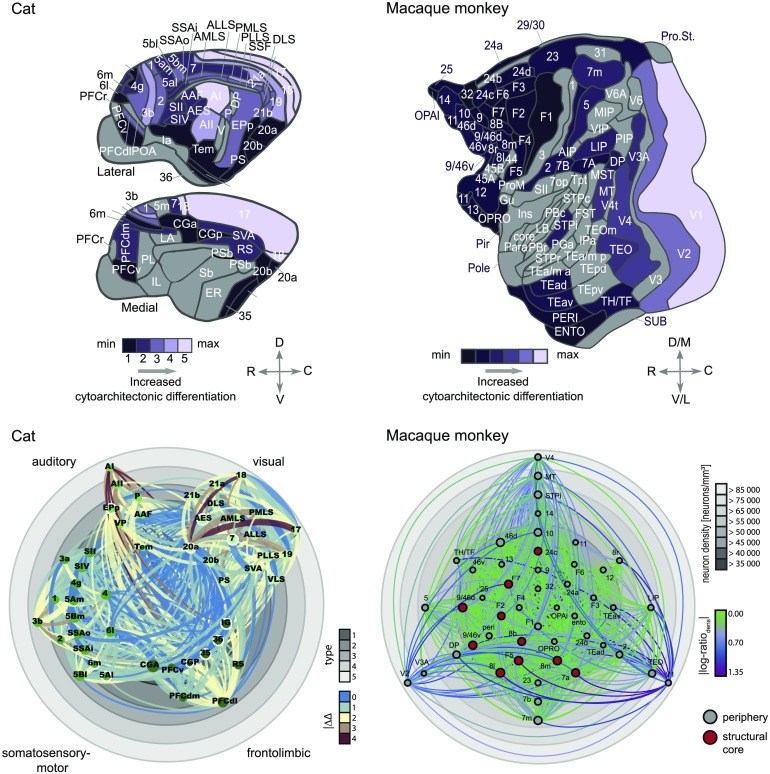Figure 2. .
Architectonic type principle across species. Upper panels: Maps of the cat and macaque cortex, indicating the variation of architectonic differentiation across the cortex of these two species. Differentiation is represented as architectonic type in the cat cortex and as neuron density in the macaque cortex. Lower panels: Visualization of cortico-cortical connections in the cat and macaque cortex. Cat connections are shown as collated in Scannell et al. (1995); macaque connections are shown as published by Markov, Ercsey-Ravasz, et al. (2014). Gray rings correspond to degree of architectonic differentiation (determined as cortical type for the cat and by neuron density for the macaque) and cortical areas are placed accordingly, with differentiation increasing from center to periphery. Projections are color coded according to the difference in architectonic differentiation between connected areas. Node sizes indicate the areas’ degree (that is, the number of connections associated with them). For the cat cortex, ordinal projection strength (sparse, intermediate, or dense) is coded by increasing projection width and nodes are grouped and color coded according to anatomical modules as indicated. Hub-module areas, as classified by Zamora-López et al. (2010) in the cat and Ercsey-Ravasz et al. (2013) in the macaque, are marked by a white outline or red fill, respectively. Panels adapted from Beul et al. (2017, 2015).

